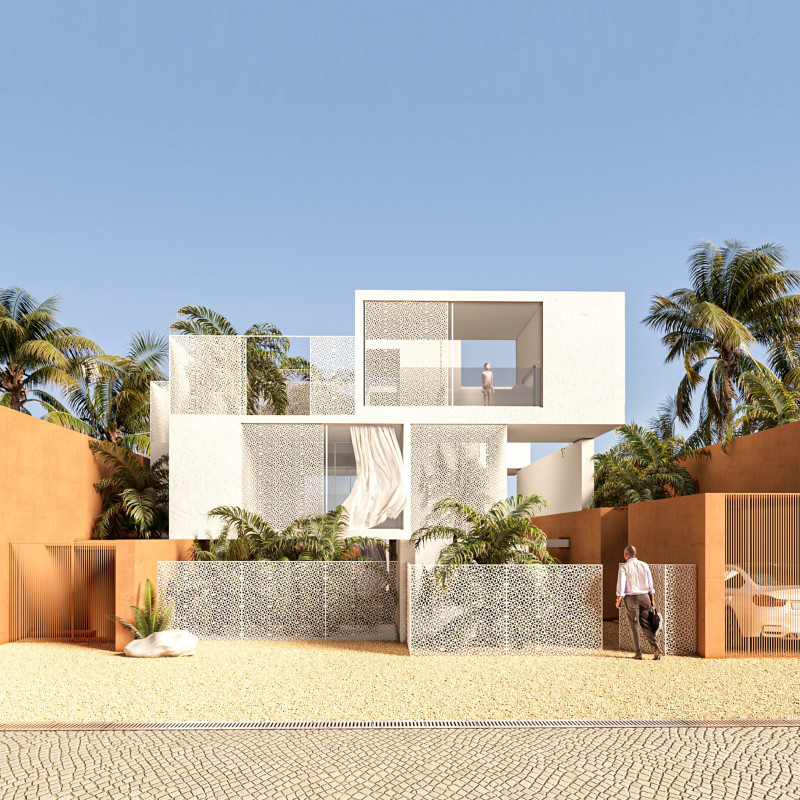5 key facts about this project
At its core, the project embodies a commitment to sustainability and modern living. The design incorporates open, airy spaces that enhance natural light penetration, utilizing large windows and strategically placed skylights. This deliberate orientation not only underscores the importance of natural light in the architecture but also fosters a direct connection between the interior and the exterior, encouraging interaction with the surrounding landscape. The architectural designs reflect a careful consideration of the building's position relative to the sun's path, optimizing energy efficiency while promoting a healthy indoor environment.
Materiality plays a pivotal role in the project's execution. The use of locally sourced materials demonstrates a respect for regional characteristics and minimizes the carbon footprint associated with transportation. Elements such as sustainably harvested timber, recycled metal, and low-impact concrete are prominent throughout the design, contributing to an overall sense of unity and continuity. These materials have been selected not only for their aesthetic qualities but also for their performance in various climate conditions, ensuring longevity and durability.
The functionality of the space is emphasized through a layout that prioritizes user experience. The design incorporates flexible areas that can adapt to a variety of uses, thus catering to the diverse needs of its occupants. Collaboration spaces are intertwined with private zones, allowing for both teamwork and solitude. This duality fosters a sense of community while respecting individual work styles. The thoughtful arrangement of spaces also facilitates ease of movement, creating a fluid transition from one area to another.
Unique design approaches are evident throughout the project, highlighting an innovative balance between modern architectural practices and traditional influences. The integration of biophilic elements not only enhances visual interest but also ensures the well-being of the occupants. Indoor gardens and green walls are strategically placed, promoting biodiversity and improving air quality within the building. The project's emphasis on nature becomes a pivotal feature, inviting occupants to engage with their environment in a meaningful way.
The incorporation of technology is seamlessly woven into the fabric of the project. Smart building systems manage energy use efficiently, providing real-time feedback on consumption patterns. This integration reflects a forward-thinking approach, acknowledging the role of technology in enhancing both comfort and efficiency. Additionally, user-friendly interfaces ensure that occupants can easily interact with these systems, fostering a culture of sustainability and awareness.
The architectural sections reveal the intricacies of the design, showcasing how each choice contributes to the overall narrative of the building. Ascending views from various vantage points illustrate the spatial hierarchy, while cross-sections demonstrate how light and air flow through the spaces. These detailed analyses provide valuable insights into the architectural ideas that underpin the project.
As you explore the project presentation further, take the opportunity to delve into the architectural plans and discover the nuances of the design. Engage with the various architectural sections to gain a deeper appreciation for how the project functions both aesthetically and practically. This project stands as an example of how thoughtful design can create spaces that are not only functional but also enriching for their users. Embrace the potential this architectural endeavor offers and explore the intricate details that define it.


 Raouf Ghasemi Barghi,
Raouf Ghasemi Barghi,  Sanaz Biukaghazadeh
Sanaz Biukaghazadeh 























